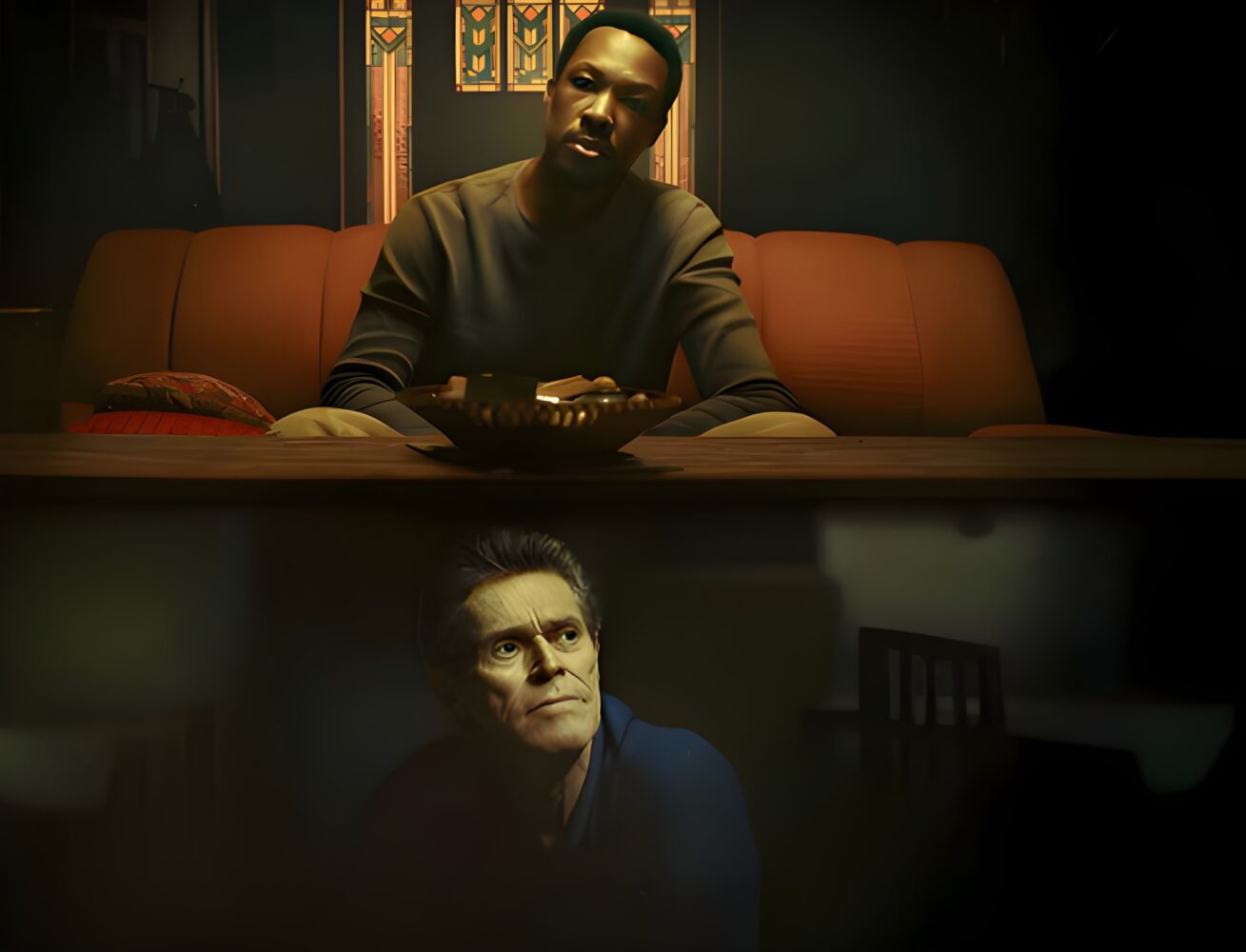TL;DR: Willem Dafoe rents a basement and reality itself starts to rot. A haunting psychodrama about race, power, and ownership that refuses to give easy answers.
Disney+’s The Man in My Basement
There’s a particular kind of film that worms its way into your subconscious not because of what it shows, but because of what it refuses to say outright. The Man in My Basement, adapted by Walter Mosley from his own 2004 novel and directed by Nadia Latif in her feature debut, is that sort of unsettling houseguest of a movie. You don’t invite it in for comfort; you let it cross the threshold and immediately regret it, but something about its presence demands you keep watching. By the end, you’re not sure whether it was a parable, a horror story, or an elaborate joke at your expense. And then Willem Dafoe looks you dead in the eye, and you realize you’ve been the one under interrogation the whole time.
Set in Sag Harbor in the 90s, the film follows Charles Blakey, played with raw, guarded intensity by Corey Hawkins. Charles is one of those characters who feels less like an archetype and more like someone you could’ve met at the grocery store, if only you’d looked up from the checkout line. He’s broke, jobless, and living in a once-proud family home that’s decaying like an old wound. The walls of the house practically hum with ancestral weight: eight generations of Blakeys have lived and died here, and Charles, already burdened with the ghosts of caretaking for his late mother and uncle, now finds himself staring down foreclosure after taking out a reckless loan. If you’ve ever stood in the middle of your childhood home and realized the roof over your head could vanish because of a single bad decision, you’ll understand the particular ache Mosley is excavating here.
The film doesn’t shy away from the specific racial context of that ache. While Charles struggles, the TV in the background murmurs about Rwanda, about OJ Simpson, about race and violence in a way that’s deliberately casual, as if America itself can’t stop doomscrolling even in 1995. And then, like a devil out of a cautionary folktale, Anniston Bennet appears. Willem Dafoe plays Bennet with the kind of oily charisma that makes your skin crawl even when he’s smiling. He offers Charles sixty-five thousand dollars in exchange for a very peculiar arrangement: Bennet wants to live in Charles’s basement for a few months. No questions asked. Cash up front. The kind of deal you know should end badly, but like Charles, you can’t quite walk away from.
What follows is not quite a horror film, not quite a thriller, and not quite a morality play—though it borrows a little of each. Bennet moves in with his odd luggage and stranger requests, and suddenly the balance of the house shifts. Charles is no longer its master, even as Bennet insists he’s the one at a disadvantage, the guest, the tenant. The film plays this inversion like a funhouse mirror: who owns what, and who holds power in the exchange? The answer changes depending on where you stand in the frame. At times, it feels like Jane Eyre’s attic rewritten for American racial politics: instead of the madwoman hidden above, Charles finds himself with a sinister white man haunting the cellar.
Latif directs this material with a steady, eerie restraint. There are no cheap jump scares, no easy moral resolutions. Instead, she lets the tension ferment. Everyday life becomes uncanny. Nightmares blur into waking reality. You’re never sure whether the basement is just a basement or a metaphorical pit swallowing both men whole. The story circles itself like a vulture, daring you to find one clear meaning. And then, just when you think you’ve cracked the code, Mosley drops in a visual cue—Frantz Fanon’s The Wretched of the Earth—like a grenade of theory, forcing you to rethink everything you just saw.
If that sounds frustrating, it is, but it’s also intentional. The Man in My Basement wants you lost in its labyrinth. It wants you to feel the disorientation Charles feels, caught between dependency and resentment, guilt and survival. For all its eerie atmosphere, the real horror here is not supernatural at all. It’s the horror of being owned—by debt, by history, by the crushing weight of a system that has already decided the terms of your life before you’ve even signed the paperwork.
Hawkins grounds the film with a bruised humanity, while Dafoe is a perfect foil: grotesque, charming, impossible to pin down. Watching them circle each other is like watching a snake and a bird locked in an endless dance, and you’re never entirely sure who’s supposed to be the predator.
The ending offers no catharsis, no release valve. Instead, it leaves you with questions that metastasize long after the credits roll. And maybe that’s the point. Latif and Mosley don’t want to hand you a clean parable about racism or capitalism or exploitation. They want to show you the mess, the murk, the uneasy silence between words. They want you unsettled.
Final Verdict:
The Man in My Basement is a strange, unsettling, and often frustrating film, but it’s also one of those rare works that sticks under your skin. Willem Dafoe and Corey Hawkins turn a parable about power and race into a psychodrama that feels both timeless and timely. You may not love it, but you won’t forget it.







